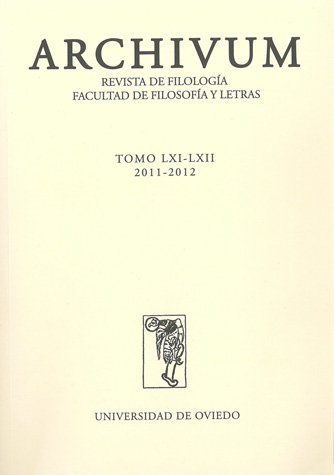Resumen
RESUMEN:
El estudio del “Tríptico: el mal de amén” es un análisis semiótico y textual que ofrece una lectura de los signos figurativos de las portadas, los signos literarios (reiteraciones fónicas, reiteraciones de títulos generales de los volúmenes, sus partes y poemas, el lenguaje metafórico, etc.) y de los signos verbales.
El Tríptico es una poesía original que, aunque reconoce vinculaciones con los poemas de San Juan de la Cruz y con la poesía religiosa española tradicional, pasa de una mística de amor y desprendimiento a una mística de la vida cotidiana, según la cual el hombre trata de seguir el camino hacia Dios entre las cosas que lo rodean en su trabajo diario.
PALABRAS CLAVE: crítica inmanente, semiótica, signo figurativo, signo verbal, mística.
ABSTRACT:
The study of the “Tríptico: el mal de amén” is both a semiotic and textual approach to this poetic piece in order to offer a reading of front page figurative signs, and also a reading of the literary signs (i.e. phonic iterations; iterations of the volume titles, parts and poems; metaphorical language, etc.) and of the verbal signs as well.
The “Tríptico” is an original work linked to St. John of the Cross poems and to the religious Spanish poetry, but it moved on from a mysticism of love and detachment to a mysticism of the daily life, according to which the man tries to follow the way towards God among the things surrounding him at his daily work.
KEY WORDS: immanent criticism, semiotics, figurative sign, verbal sign, mysticism.

